|
With snow in the forecast for many of us, it’s time to light a fire, prepare a hearty meal, and open a bottle of wine. So here are three palate-pleasing red wines to sip by the fire or enjoy with a meal. And if you’re basking in balmy weather. I’ve included a fresh and sassy white wine! But, of course, all four wines are great to drink any time of year! Abate Lugana DOC 2021 Lugana DOC is a small denomination located on the southern banks of Lake Garda, which crosses over both the Lombardy and Veneto regions in northern Italy. Lugana is renowned for its white wines and distinctive morainic terroir of penetrating humid clay soils and rich minerals deposited by the glacial moraines of thousands of years ago. The wines are naturally high in acidity with characteristic aromas of white flowers and citrus. Trebbiano (Turbiana) is this region’s signature white grape. The Abate family has been growing grapes here since 1920, but it wasn’t until generations later that they produced their first wine. Abate Wine was founded in 2018 and is owned by Sergio Abate. This wine is 100% Turbiana. Nose: Floral, peach, apple, citrus, and minerality. Palate: White stone fruit, vibrant acidity, and minerality driven. Notes of lemon, a hint of herbs, and a creamy mouthfeel. Alcohol: 13% SRP: $10 Pairing suggestions: Enjoy as an aperitif, or serve with seafood, light appetizers, mushroom risotto, and salads. Casalforte Valpolicella Superiore DOC 2020 Riondo Winery, founded in 2008, is an offshoot of the cooperative consortium Collis Veneto Wine Group. Valpolicella is east of Lake Garda, situated in the province of Verona. Valpolicella produces the famous grape varieties Corvina, Rondinella, and Oseleta, and it is considered the most famous red wine area in Veneto. Valpolicella was given DOC status in the 1960s. Many styles are produced here, such as Classico, Superiore, Amarone, and Ripasso, and range from light and easy-drinking to powerful and complex wines. This wine is a blend of Corvina, Rondinella, Corvinone, and other grapes. It has been aged partly in stainless steel and partly in wood casks for 12 months. Nose: Fragrant aromas of cherry, plum, baking spice, herbs, and hints of yeast. Palate: Rich and silky with cherry, blueberry, anise, vanilla, smooth tannins, and a long finish. Alcohol: 13% SRP: $15.99 Pairing suggestions: Grilled or roasted meat, game, creamy pasta, seared tuna, or aged cheese. Talosa Nobile Di Montepulciano Riserva DOCG 2017 Talosa is a boutique winery with 33 hectares located in the heart of Montepulciano in Tuscany and is owned by the Jacorossi family since 1972. Their historic aging cellar dates back to the 16th century. It is in the old town center of Montepulciano, in an underground area between two of the oldest buildings in the city, Palazzo Tarugi and Palazzo Sinatti. The brick passageways contain a series of vaults and niches where the barrels are placed. In 1980 Vino Nobile became one of the first four appellations given superior status of DOCG, along with Barolo, Brunello di Montalcino, and Barbaresco. This wine is 100% Sangiovese. After carefully selecting grapes, the fermentation time is about 20-25 days at controlled temperatures in stainless steel. The maturation is for three years in new oak tonneaux and 2nd passage, big barrels, and stainless steel. The finished wine continues to age in bottle for at least six months before release. It has an aging potential of over 15 years. Nose: Rose petals, berries, cherry, baking spice, and earthy. Palate: Concentrated flavors of dark berries, plum, cherry, and spice. Silky tannins, nice acidity, and understated minerality. Elegant, bold, and structured with a long finish. Alcohol: 14.5% SRP: $38 Pairing suggestions: Beef, game, hearty stews, pasta, or vegetable pizza. Cuslanus Amarone della Valpolicella DOCG Classico Riserva 2015 Albino Armani Winery has been making wine since 1607. Today, the family project boasts five privately owned estates composed of 330 hectares of vineyards. The family vineyards are in three major Italian wine-growing regions: Veneto, Trentino, and Friuli-Venezia Giulia. Albino has a strong bond with the land and says, “Sustainability = Viticulture and Social Responsibility.” All of the Albino Armani vineyards since 2019 have been given the SQNPI certification. This national certification aims to help agricultural ecosystems monitor and reduce environmental impact, reducing the use of synthetic chemicals and rationalizing all agronomic practices such as fertilization and irrigation. This wine is a blend of Corvina, Corvinone, and Rondinella. The grapes are sourced from vineyards in the high hills of the Valpolicella Classico production area at 500 meters. After a careful selection in the vineyard, the grapes are put in trays and left to dry in a drying loft called “fruttaio,” located next to the winery. This “appassimento” process is very slow in order to support the concentration of sugar, structure, and aromas. In the first months of the year following the harvest, the grapes are gently pressed, and then a long and slow fermentation in contact with the skins takes place. After this, the wine is aged for a long time in big barrels and tonneaux until bottling. It is then released to the market after at least four years. Nose: Lovely aromas of dark cherry, berries, spice, and a hint of earth.
Palate: Fine ripe fruit with cherry, red and dark berries, fennel, sweet spice, chocolate, and fine-grained tannins. An elegant and seductive wine. Alcohol: 15.5% SRP: $59.99 Pairing suggestions: Brisket, game, pasta, vegetable stew, truffle risotto, or sip and enjoy on its own. I hope these wines have piqued your interest. I’m ready to cozy up to a roaring fire with a glass of wine and a hearty stew! Until next time… Cheers! Penina To leave a comment or if you have an inquiry, please contact me at [email protected] Zenato Winery’s tagline “The soul of Lugana and the heart of Valpolicella” encapsulates the essence of this winery located in Veneto in northeastern Italy. Sergio Zenato and his wife, Carla, founded Zenato in 1960. Sergio’s life long dream was to create a winery and produce memorable wines reflecting the “fruits of the earth” from which they were grown. His vision was realized and today these expressive wines are the result of his tireless efforts, love for his land and passion for quality. Both children, Nadia and Alberto Zenato, now run the winery. Nadia manages the marketing and promotional activity and Alberto is the winemaker who oversees all aspects of production. Zenato has 95 hectares of vineyards that stretch from the banks of Lake Garda in Lugana to the hills of Valpolicella’s “classic zone” in the province of Verona. The Santa Cristina estate is located in San Benedetto di Lugana where Trebbiano di Lugana grapes are grown. Lugana DOC is a small denomination that produces only white wines and is renowned for its distinctive morainic terroir of penetrating humid clay soils and rich minerals deposited by the glacial moraines of thousands of years ago. The wines are naturally high in acidity with characteristic aromas of white flowers and citrus. Zenato’s Costalunga estate in Valpolicella produces the famous grape varieties Corvina, Rondinella, and Oseleta. Valpolicella is considered the most famous red wine area in Veneto and was given DOC status in the 1960s. There are many styles produced here such as Classico, Superiore, Amarone and Ripasso and they range from light and easy-drinking to powerful and complex wines. I had the pleasure of tasting three Zenato wines that are great examples of what this winery produces. Lugana di San Benedetto DOC 2018 This wine is made from 100% Trebbiano di Lugana harvested from the San Benedetto vineyard on the south shore of Lake Garda. A pale lemon color opens to heady aromas of floral, citrus and stone fruit. Beautiful notes of white flowers, peach, pear and minerality sate the palate with a hint of apricot on the finish. This wine has a round, creamy mouthfeel that is blended nicely with crisp acidity. Drink as an aperitivo or serve with fish, light salads and Asian cuisine. Alcohol: 13% SRP: $20 Alanera Rosso Veronese IGT 2017 This wine is a blend of 55% Corvina, 25% Rondinella, 10% Corvinone, 5% Merlot, and 5% Cabernet Sauvignon. Fifty percent of the grapes harvested for this wine are partially dried for 45 to 60 days. The highly concentrated juice from this process adds an array of aromas, flavors and complexity to the blend. A period of 12 months is spent aging in French barrels with another three months of bottle aging. Lovely aromas of cherry, plum, tobacco, floral and spice segue onto the palate with added flavors of dried herbs, prune and vanilla. It is a perfect blend of silky tannins and acidity with the bonus of a long and luxurious finish. Serve with meat, stews, aged cheese and fatty fish. Alcohol: 13.5% SRP: $20 Ripassa Valpolicella Superiore DOC 2015 This wine is a blend of 85% Corvina, 10% Rondinella and 5% Oseleta. The Ripasso method is a technique where the Valpolicella wine is re-passed onto the pressed dried grape skins from which Amarone is made that are still warm and rich in sugar. A second alcoholic fermentation begins which increases the alcoholic content and the wine becomes richer in color and bouquet. The wine is aged in French oak for 18 months and an additional six months in the bottle before release. This is an elegant wine with intense aromas of dark fruit, plum, spice and forest floor. The palate is layered with rich, ripe fruit such as cherry, plum and blackberry. Hints of baking spice, dark chocolate and minerality show through with creamy tannins and are nicely balanced with acidity and alcohol on a long finish. Serve with meat, game, pasta and hard cheese.
Alcohol: 14.5% SRP: $30 These are expressive wines and a great representation of Zenato. And, they have definitely captured the heart and soul of Lugana and Valpolicella! Until next time… Cheers! Penina To leave a comment or if you have an inquiry, please contact me at [email protected] At the mention of Verona, Italy, I can’t help but think of Shakespeare’s Romeo and Juliet. It tends to conjure up romantic images of Juliet standing on a balcony professing her love for Romeo. The enchanting province of Verona is located at the foot of the Lessini Mountains and is partially encircled by the Adige River in northern Italy’s Veneto region. It is about 65 miles to the west of Venice and a short distance from Lake Garda to the north. There is much to see and do in Verona, from visiting medieval castles and Roman ruins to the famous Piazza delle Erbe where one can sip an aperitivo in one of the many outdoor cafes. But beyond these attractions lie the great wine vineyards that surround Verona including the Custoza DOC wine region also known as Bianco di Custoza. Although one might tend to associate Verona with such wines as Amarone, Bardolino, Valpolicella and Soave, the wines of Custoza should not be overlooked and are worth exploring. Custoza DOC is known for its white wine production and while on a press trip to this region last month I visited several wineries and was introduced to these fresh and lightly aromatic wines. Vine cultivation has its roots in this area dating back to Roman times. However, it wasn’t until the mid 19th century that the focus for wine production was specifically associated with the name Custoza, which is a historical village in the municipality of Sommacampagna. In 1939 the Experimental Station of Viticulture and Oenology of Conegliano conducted a study that identified some of the best wine-growing areas in the western province of Verona and the Sona-Custoza area was among them. In 1971, Custoza was established as a DOC and The Consorzio Tutela Vino Custoza (The Consortium for the Protection of Custoza wine) was founded in 1972. The Consortium presently represents 70 wineries, two cooperatives and 500 winemakers with vineyards covering about 1400 hectares. The vineyards are located between Lake Garda and the city of Verona with ideal south and southwest exposure in the moraine hills. Morainic soil from ancient glaciers is rich in minerals and contributes to the characteristic minerality and flavor that these wines are known for. The wines are also characterized by the microclimate of the DOC Custoza area. Hot summers and cold winters balanced with gentle breezes from Lake Garda tend to be consistent and contribute to the development of aromas of the white grapes. Under Custoza DOC rules, only nine grape varieties are allowed in the production of the wine, most of which are indigenous grapes. The wines are a blend of anywhere from three grape varieties up to seven or more. Garganega, Trebbiano Toscano and Trebbianello must be part of the blend. However, Bianca Fernanda has become a favorite grape variety to include in the blend as it brings a subtle aromatic scent to the wine. The other five grapes permitted are Malvasia, Pinot Bianco, Manzoni Bianco, Chardonnay and Riesling Italico. The final blend of the grapes is a work of art and each winemaker imparts his or her own style with consideration for the various soils as well as early or late-ripening grapes when blending. Traditional Custoza Bianco DOC must be a minimum alcohol level of 11% and aging is a minimum of three months. Custoza Superiore DOC is a blend of the best grapes, old vines and lowest yields. Alcohol level must be a minimum of 12.5% and aging is a minimum of five months. Generally speaking, the Custoza DOC wines range from pale yellow to golden hues. They tend to be lightly aromatic with fresh fruit and floral aromas. On the palate, one can taste the minerality in addition to flavors ranging anywhere from green and stone fruit to tropical notes. Some wines are meant to drink now while others are age-worthy. We visited three wineries, each with their own unique blends that imparted a lasting impression on my palate. Although all three wineries have vineyards throughout Verona and produce quality red wines as well, my main focus for this story are the wines of Custoza DOC. Monte Del Frà is in the heart of Custoza and is owned by the Bonomo family since 1958, but its history dates all the way back to 1492. Beginning with Massimo Bonomo, Monte Del Frà has been handed down from one generation to the next over the past 60 years. Massimo’s sons Eligio and Claudio represent the second generation who are now joined by the third generation of Marica, Silvia and Massimo who all work together to make quality wine. Marica, with abundant enthusiasm, led us on a tour and guided wine tasting. The Monte Del Frà vineyard is comprised of 15 hectares surrounding the winery headquarters in Custoza, which grow the grape varieties Fernanda, Garganega, Trebbiano Toscano and Trebbianello. It is one of 11 territories that the Bonomo family owns throughout Verona, making for approximately 137 hectares in total. Monte Del Frà practices sustainability in the vineyard as well as in the winery. In the vineyard, they apply the technical procedure of integrated defense. Marica said that one of their secrets is “we just use herbs, no pesticides”. What isn’t a secret are the refreshing, fruity and mineral-driven wines that they produce. They reflect the mirror of the terrace and the passion and dedication of the family. We tasted five wines that represent the essence of Custoza. Custoza DOC 2018 is a blend of Garganega, Trebbiano Toscano, Tocai Friulano, Cortese, Chardonnay, Riesling Italico and Malvasia. This lightly aromatic wine is fresh and fruity with lots of minerality. The flavors range from apple and peach to tropical and floral notes. It is dry and there is a nice balance between the floral and minerality. Marica said, “This wine is a style of life and a passport to being you. It is to drink, relax and be stress-free.” Cá Del Magro Custoza Superiore DOC 2016 & 2017 is a blend of Garganega, Trebbiano Toscano, Cortese, Chardonnay, Riesling Italico, Malvasia and Incrocio Manzoni. The grapes are sourced from the Cá Del Magro vineyard from vines that are 30 to over 50 years old. Both wines are complex and very aromatic. They are layered with lots of fresh fruit, sweet apple, citrus, floral and minerality. The 2016 vintage showed more minerality on the nose with a mellowed palate, but as Marica said, “It is still complex and perhaps a touch more sophisticated”. Bonomo Sexaginta Custoza Superiore DOC 2015 is a blend of Garganega, Cortese, Trebbiano Toscano, Incrocio Manzoni, Pinot Bianco and Riesling Renano. Fermenting in oak and acacia small barrels adds richness to the wines. A lovely golden hue leads to notes of honeysuckle, hints of kerosene, soft white fruit and a touch of herbs. It was quite different from the other wines that I tasted but it had its own mystique and aromatic qualities that were quite pleasing to the palate. Photo The last wine that we tasted was not part of the Custoza DOC wines, but I thought it was worth mentioning. Colombara Veronese IGT Garganega 2015 is 100% Garganega. This wine is produced from 60+-year-old vines in Oliosi, a hamlet in the commune of Castelnuovo del Garda. This is a rich and succulent wine with lots of floral aroma and stone fruit that leads to a palate of elegant fruit and spice. It is nicely balanced with minerality, savory and acidity. Monte Del Frà calls this wine “a red wine disguised as a white”. Azienda Agricola Cavalchina is located in the ancient Cavalchina district of Custoza. It was the site of the first and second War of Independency during the Risorgimento in 1848 and1866. The Ossario Monument that can be seen from the winery was erected in remembrance of all the Austrian and Italian soldiers who died in these wars. Francesco Piona, third generation in this family-owned estate, met us at the front gate of the winery. The estate was purchased in the early 1900s and the first vineyard was planted in 1942. Cavalchina is recognized as a pioneer in embracing the name ‘Custoza’ and they decided to put it on their wine labels. They made a decision to stop selling their white wine as ‘Soave’ and in 1962 they became the first winery in Custoza to label and promote their white wines made from Fernanda, Trebbiano and Garganega as ‘Bianco di Custoza’. And by 1971, Custoza DOC was established and became the standard label. All the grapes are hand-harvested from three vineyard areas that cover over 110 hectares. Francesco said, “This is an ancient land and the soil is deep and rich. The wine is a complete expression of the mineral part of the terroir.” With the grapes maturing at different times, each variety must be vinified separately when making a blend. The yields are kept very low to produce healthy grapes. We began our tasting with an entry-level wine and then moved on to a vertical tasting of Amedeo Superiore DOC. Custoza DOC 2018 is a blend of Garganega, Fernanda, Trebbiano and Trebbianello. Subtle floral aromas and minerality segue onto the palate with notes of stone fruit. This is a fresh and lively wine with a surprisingly rich texture. Amedeo Superiore DOC 2018, 2010, 2007 Prince Amedeo of Savoia fought in the Third Italian War of Independence in 1866 near the Cavalchina estate. To honor his memory the wine is named after him. He is also remembered on a memorial stone at the entrance of the winery. All three wines are a blend of Garganega, Fernanda, Trebbianello and Trebbiano. They are complex and rich. It was an impressive tasting and a tribute to the aging ability of these wines. Photo of son Amedeo Superiore DOC 2018 is imbued with a rich palate of soft floral and minerality notes. Stone fruit, apple and hints of citrus are balanced with bright acidity and a hint of almond on the finish. Amedeo Superiore DOC 2010 was the last vintage that was made with oak. Notes of floral, minerality, petrol and citrus led to a rich mouth-feel with hints of oak, savory and nice acidity. Amedeo Superiore DOC 2007 Dark yellow with age, this wine was impressive. Petrol, minerality, floral and a touch of honey on the nose segued to a pleasantly rich palate of soft fruit and a hint of spice and herbs. It was elegant! Gorgo Wine Estate is a small family-owned estate located in the village of Custoza. Dr. Roberto Bricolo originally bought the land as an investment in 1970 and used it to farm vegetables. His son, also a doctor named Roberto, founded the winery in 1973, and his daughter Roberta after attending law school, returned to Gorgo to take over the winery and eventually became the owner. What began with 22 hectares in Custoza is now over 60 hectares that are organically cultivated and the vineyards are spread throughout Bianco di Custoza and Bardolino production areas. As of 2018, Gorgo vineyards are organically certified. This was our last stop in Custoza and it was quite memorable. Not only were we treated to a royal feast, but we also tasted many “juicy” wines that included some exciting reds. Perlato Custoza DOC Spumante Brut We began the evening with a refreshing glass of Spumante. It is a blend of Trebbiano toscano, Garganega, Cortese and Durello made using the Charmat method. This is a light and zesty wine with fine bubbles and soft fruit. Custoza DOC 2018 This is Gorgo’s classic wine and bestseller. It is a blend of Garganega, Bianca Fernanda, Trebbiano toscano, Trebbianello and Incrocio Manzoni. This wine has all the classic notes one would expect of a Custoza wine. It has great aromatics, beautiful fruit notes with hints of pear and apple and minerality. San Michelin DOC 2018 This is a reserve wine made with Garganega, Cortese and Riesling that are harvested from 50+-year-old vines. The winemaker said, “The wine rests for six months and isn’t disturbed. It is allowed to develop with smells from the vineyard. The 2018 vintage was a great year.” Indeed, the wine is rich with a creamy mouthfeel and soft white fruit and citrus. It is beautifully balanced between savory and fruit. Summa Custoza Superiore DOC is elegant. It is a blend of Garganega, Bianca Fernanda and other varieties like Trebbiano and Trebbianello. The grapes are hand-harvested from ancient vineyards, (50 to 60 years old). Exotic floral scents, orange blossom, stone fruit and sweet spice spill onto the palate with ripe tropical fruit and the minerality really shines through. This is an opulent and complex wine with perfect acidity and silky mouthfeel. It was a great finish to a perfect evening! In between visiting the wineries, we stopped for lunch at Trattoria Colli Storici to feast on the local cuisine and Custoza wines. The wines paired beautifully with all the dishes served, including dessert! Custoza DOC wines are very approachable and food-friendly as proven by all the wonderful cuisine we sampled along with the wines. The next time you’re in Verona, take a ride to Custoza and treat yourself to a feast of wine and food. In the meantime, pick up a bottle or two at your favorite wine shop. I can’t wait to add a few bottles of Custoza wines to my collection. Until next time...
Although it is not as widely known as some of its more famous neighbors, Le Marche (pronounced Mar-kay) wine region should be on your radar. Le Marche is located on the eastern side of central Italy, nestled between the Apennine Mountains to the west and the Adriatic Sea to the east. There are approximately 60,000 acres of vineyards in Le Marche with varied terroirs throughout. Warm and cool climate zones exist in this region due to the influence of the mountains, rivers and the Adriatic Sea. Calcareous, clay and limestone-rich soils can be found here and are excellent for growing grapes such as the white grapes Trebbiano and Verdicchio that Le Marche is best known for. In fact, Verdicchio has been growing here for over 600 years. Sangiovese and Montepulciano red grapes grow well here as well. The majority of wines in Le Marche are sold as IGT Marche title (Indicazione Geografica Tipica), but the region also has DOC and DOCG titles as indicated on the map below. This past week I was introduced to the wines of Velenosi Winery located just outside the town of Ascoli Piceno. The dynamic Angela Velenosi co-founded the winery in 1984. Angela had no experience, land or capital, but she did have a vision. Her energy and passion led her to become one of the largest family-owned wineries in Le Marche region with a production of 2.5 million bottles per year and over 25 wine labels. Today Velenosi Winery represents all the appellations throughout Le Marche wine region and Angela is known as “the lady of Le Marche”. I had the opportunity to taste five wines from the Velenosi portfolio. Passerina Brut NV is made with indigenous 100% Passerina grapes grown in the vineyards of Ascoli Piceno at an altitude of 200-300 meters above sea level. The grapes are hand-harvested and the wine is produced using the Charmat Method. This is a lively, aromatic sparkling wine with soft fruit and flowers on the nose. A palate of citrus, flowers, light fruit, a hint of bread dough, fine bubbles, lively acidity and creamy texture make this wine a delight to drink. Alcohol: 12% SRP: $15.99 Verdicchio dei Castelli di Jesi DOC Classico 2018 is made with 100% Verdicchio grapes grown in the oldest and original area of Castelli di Jesi, (Marche’s largest DOC area). Verdicchio means, “little green one”. The wines tend to be straw-colored with pronounced green hues and aromas of green fruit. This is a lovely dry wine with floral, fruity and saline aromas that segue onto the palate with green apple giving it the right amount of tartness. The vibrant acidity and a finish of lemon zest make this any easy wine to pair food with. SRP: $15.99 Pecorino Offida DOCG Villa Angela 2018 is 100% Pecorino hand-harvested from the vineyards of Ascoli Piceno and Offida at 200-300 meters above sea level. The name Pecorino translated means, “little sheep”, not to be confused with the cheese of the same name. As the story goes, local sheep ate these sweet grapes and considered them a treat. This wine has lots of floral and fruit aromas. The palate shows tropical fruit, spice, fennel, fresh minerality and vibrant acidity. Alcohol: 13% SRP: $15.99 Lacrima di Morro DOC Querciantica 2018 is 100% Lacrima di Morro d’Alba harvested from vineyards in the municipalities of San Marcello –Ancona. An interesting note about this grape varietal is that after 25 years it stops producing grapes and needs to be replanted. One of its main characteristics is a “rose and violet flavor”. This wine has sweet aromas of floral, strawberry and cherry that segue onto the palate with soft tannins, spice and dark cherry. This is a beautifully structured wine that is light enough to pair with a vast assortment of cuisine. Alcohol: 12% SRP: $15.99 Rosso Piceno DOC Superiore Roggio del Filare 2015 This wine is a blend of 17% Montepulciano and 30% Sangiovese grapes. Grapes are handpicked from vines that are 50+ years old in the vineyards of Offida and Ascoli Piceno at 200 meters above sea level. This wine was aged for 18 months in new French oak. A beautiful and elegant nose of floral, spice, strawberry and cherry leads to a palate of dark fruit, plum, spice and soft tannins. This is a very expressive wine that is full-bodied and well balanced. Alcohol: 14.5% SRP: $35 All of the above wines are expressive of the terroir, exhibiting powerful aromas and complexity but light enough to enjoy with most food or as an aperitf. They are all reasonably priced wines that go a long way in value.
Until next time… Cheers! Penina To leave a comment or if you have an inquiry, please contact me at [email protected] |
Categories
All
|

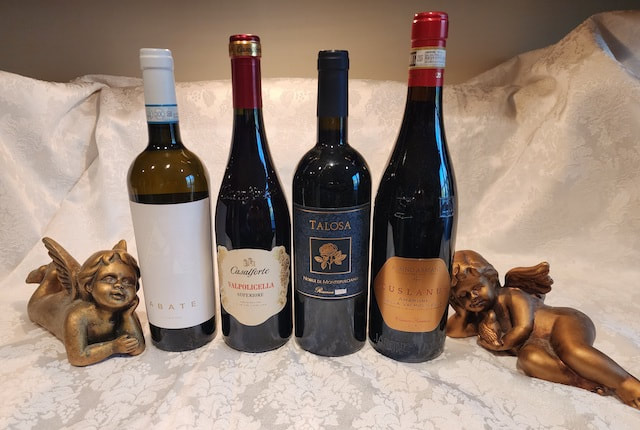
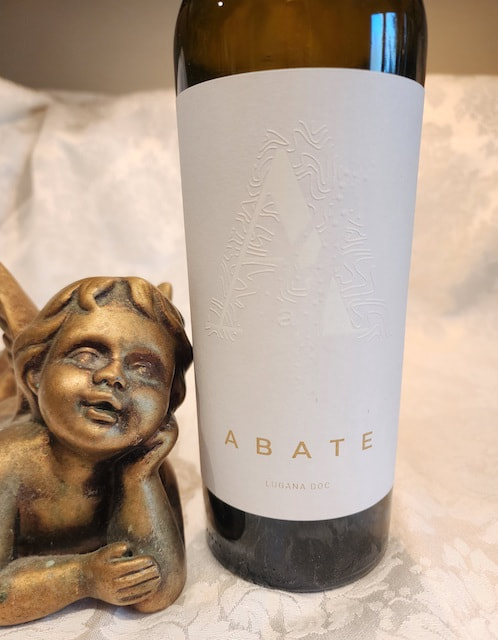
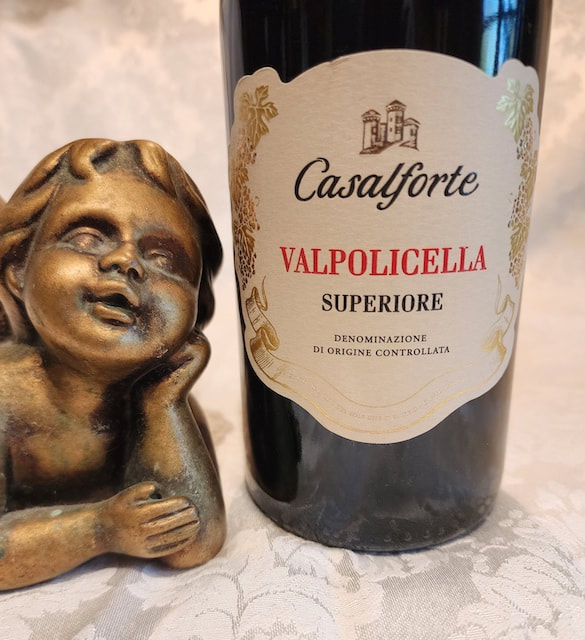
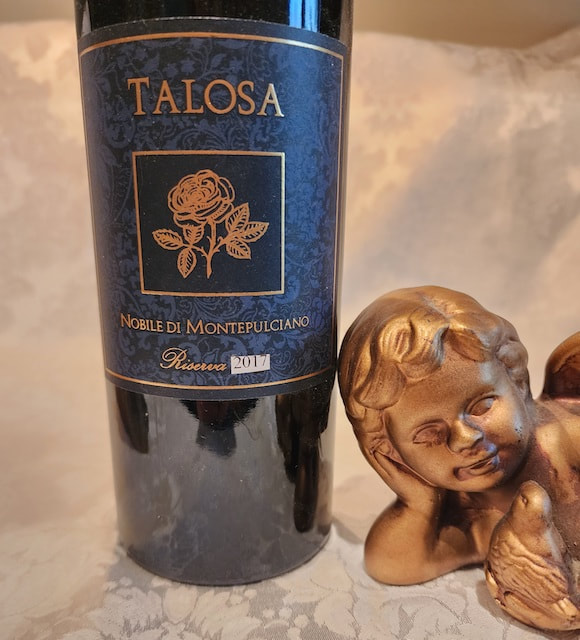
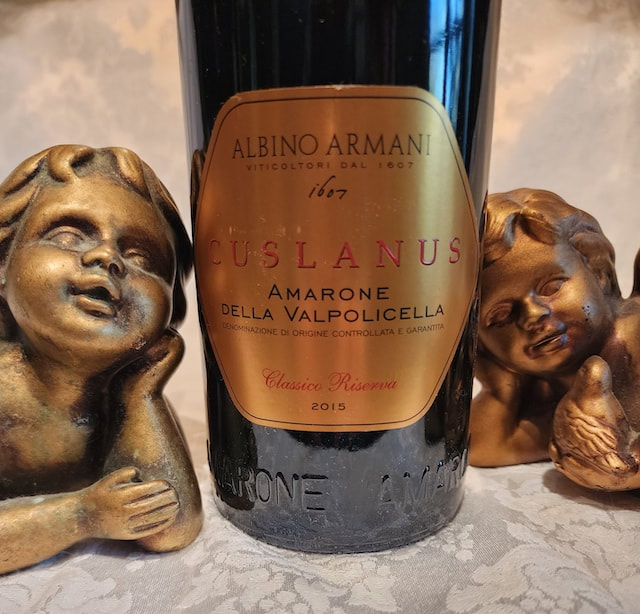
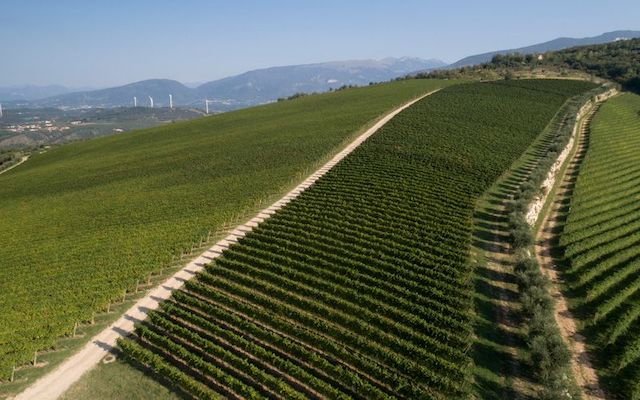
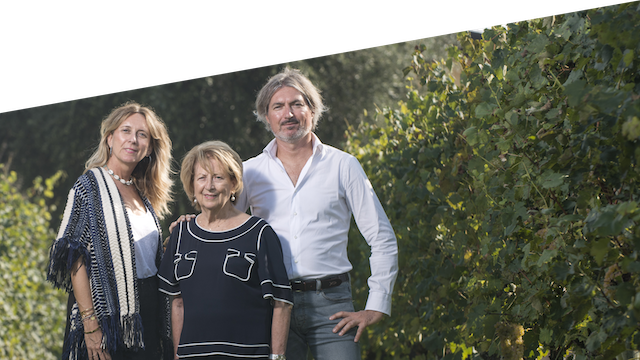
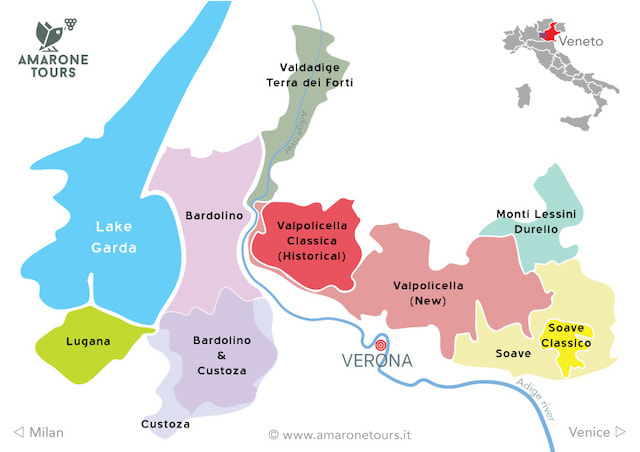
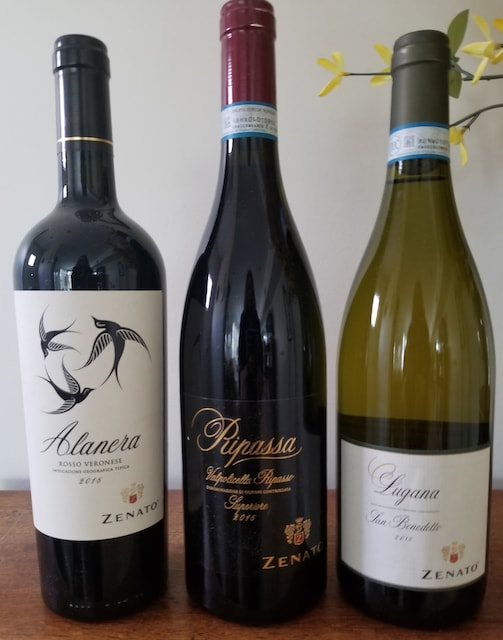
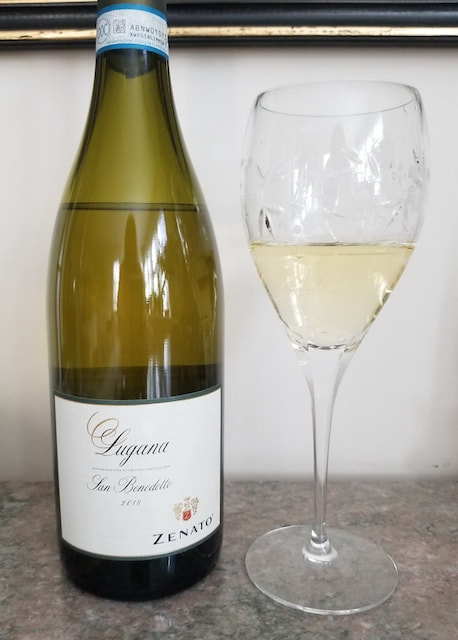
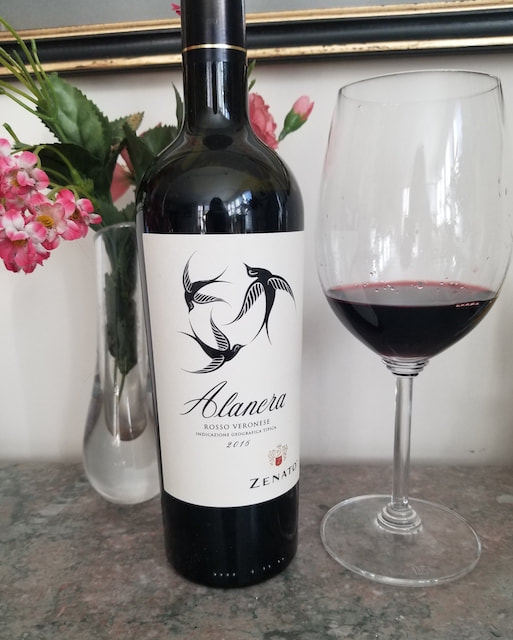
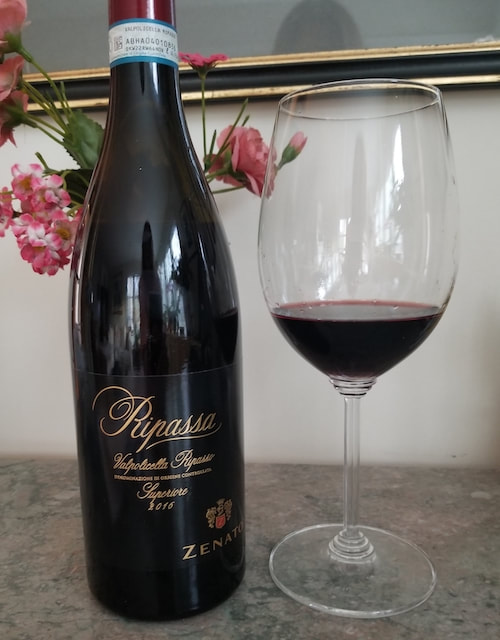
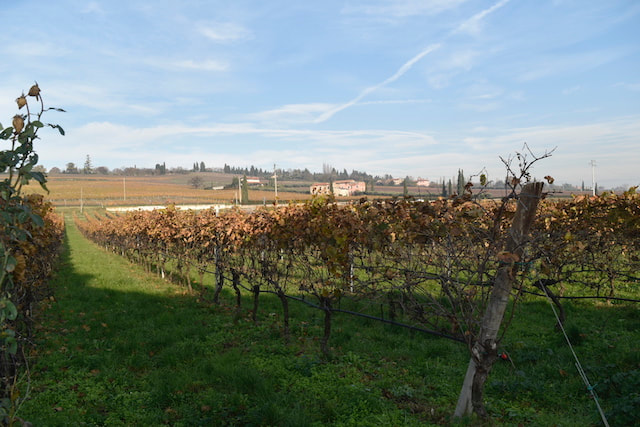
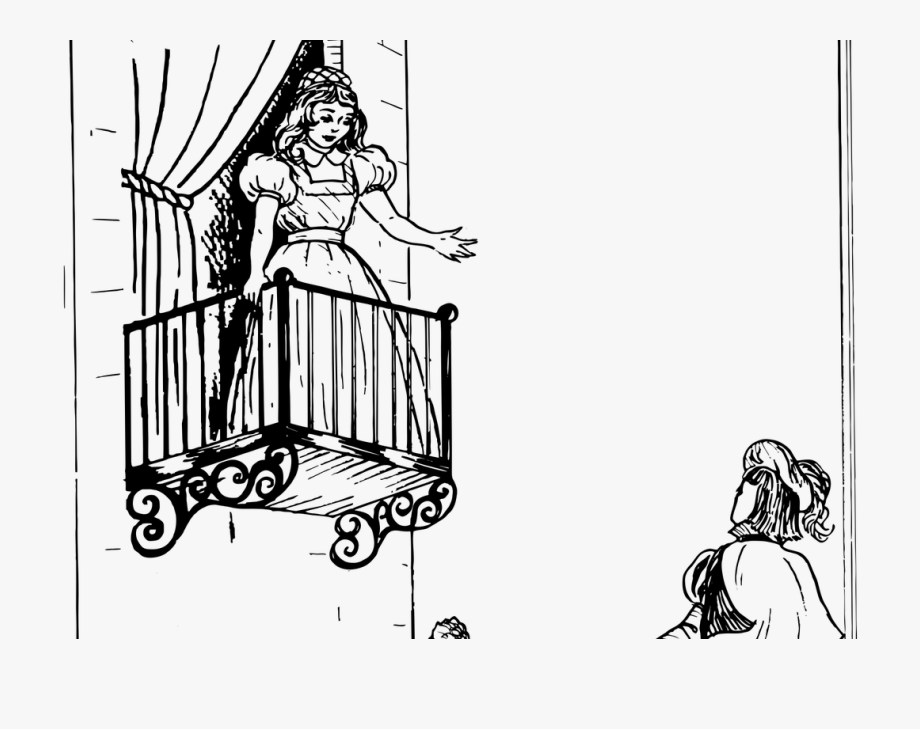
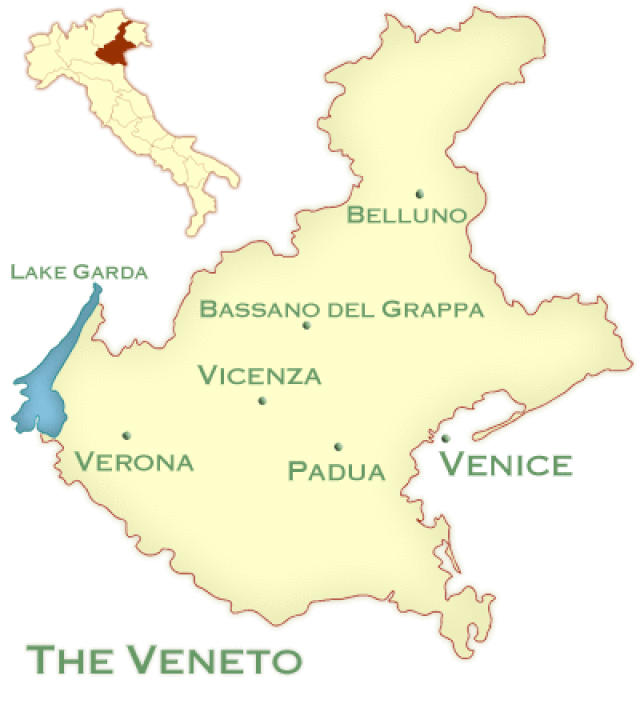
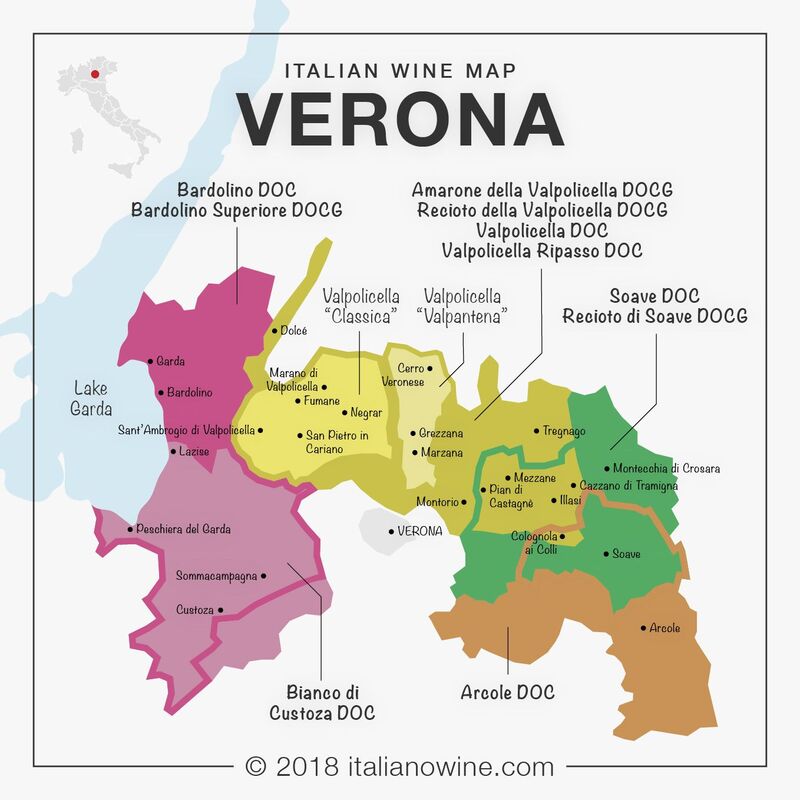
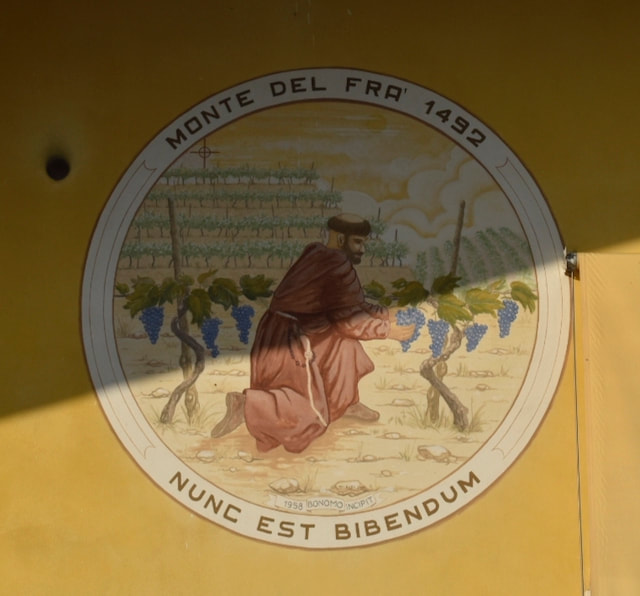
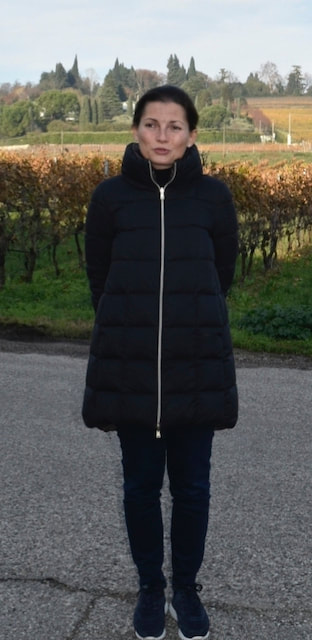
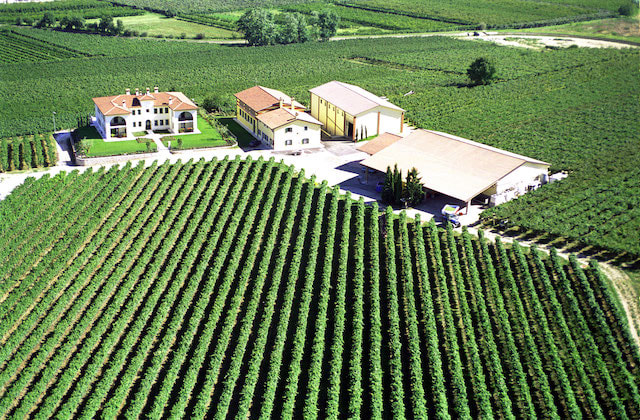
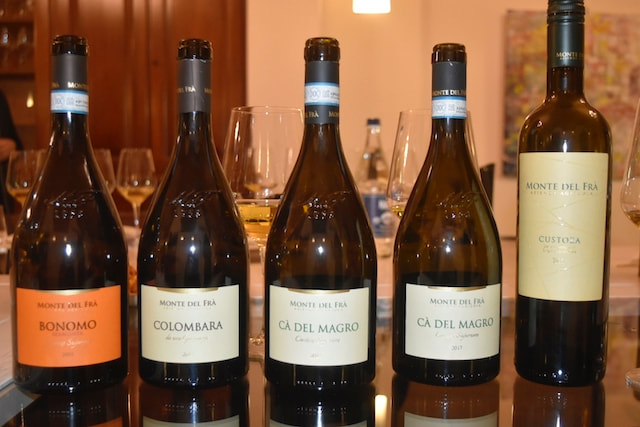
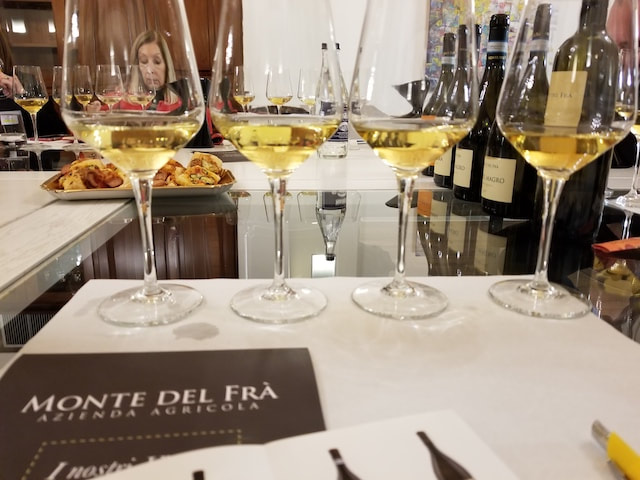
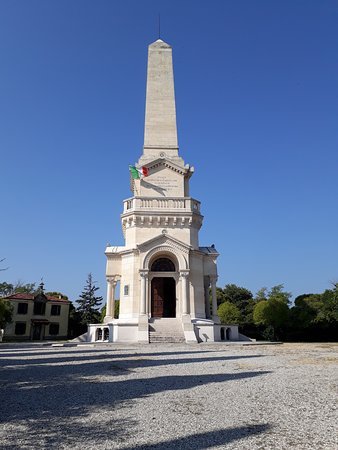
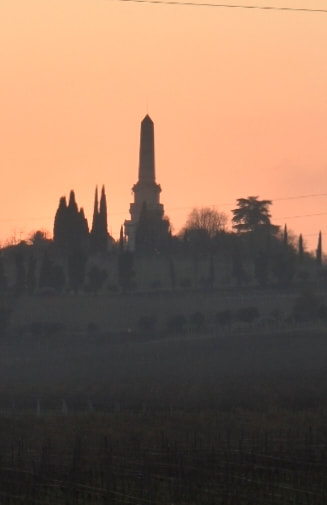
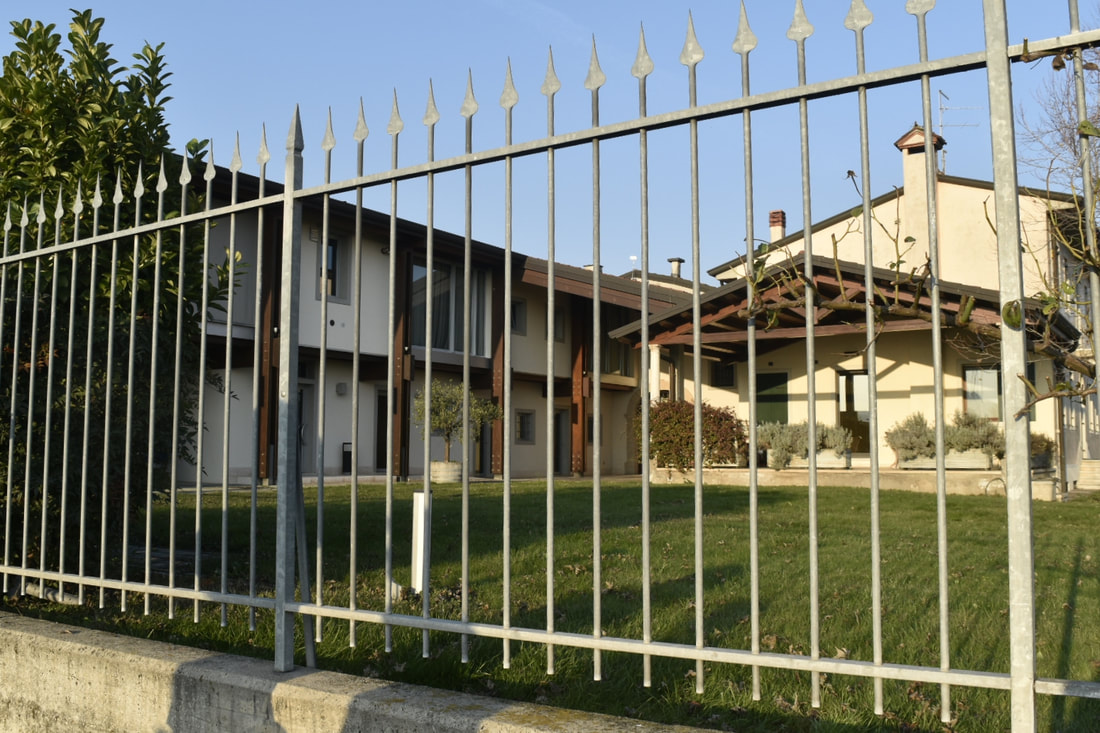
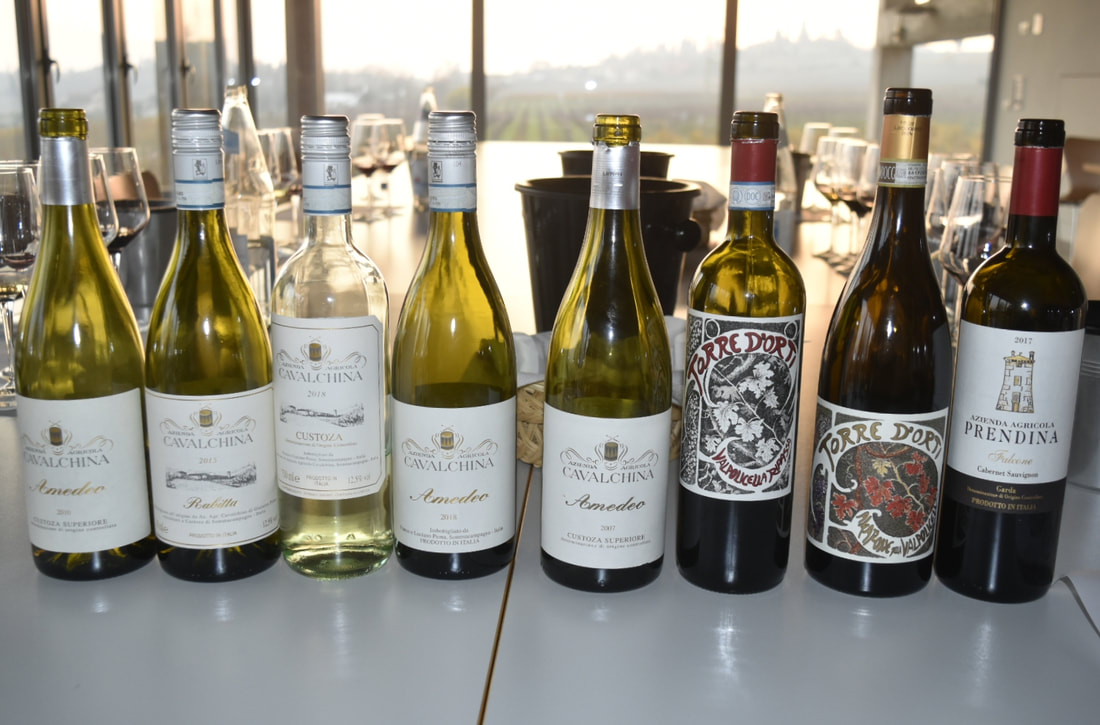
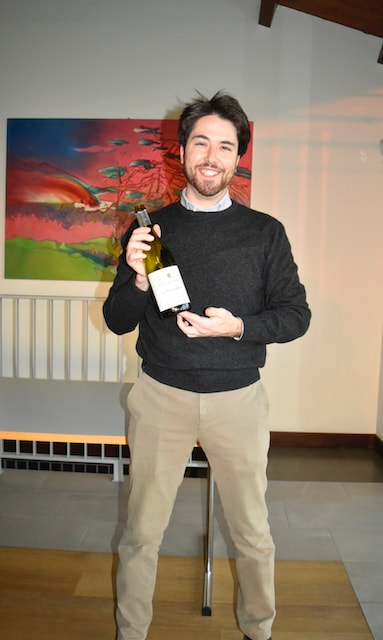
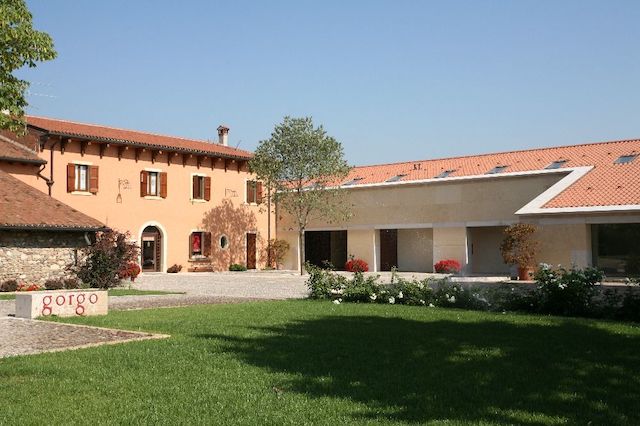
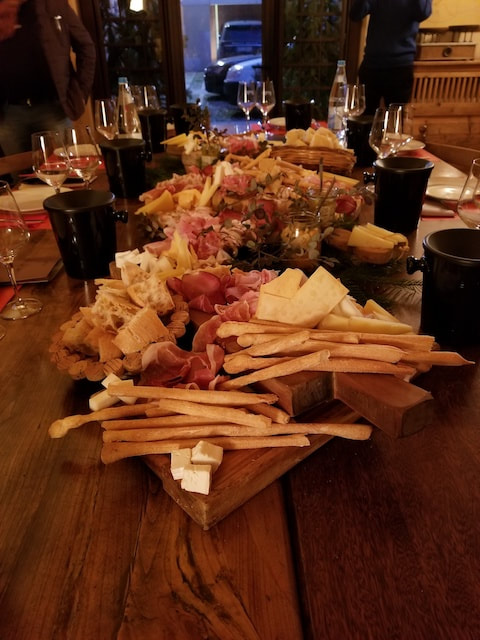
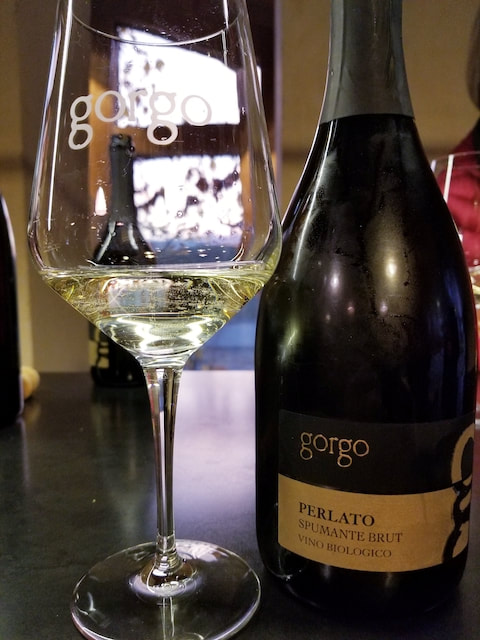

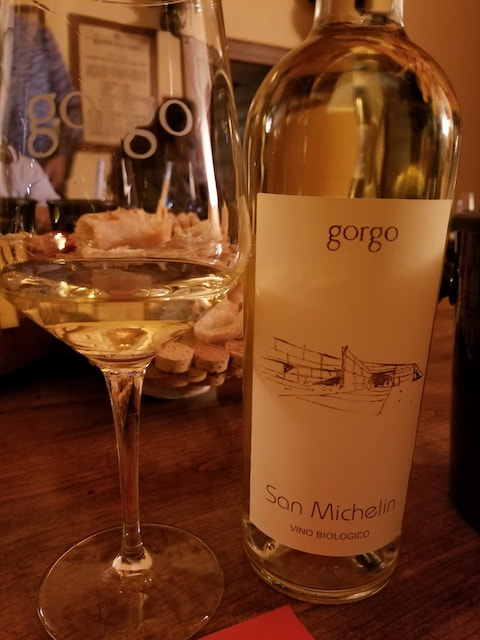
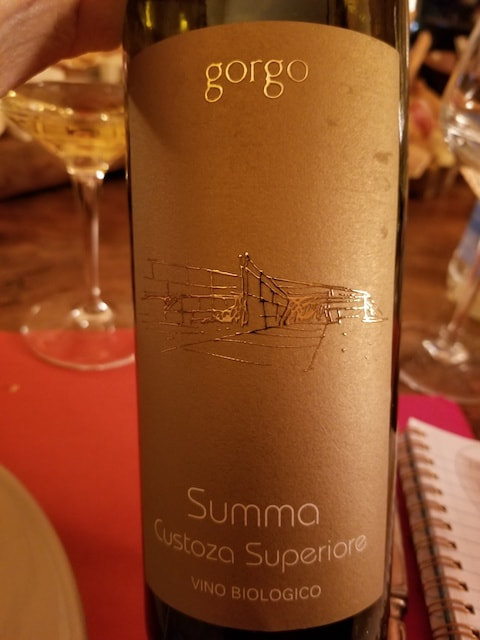
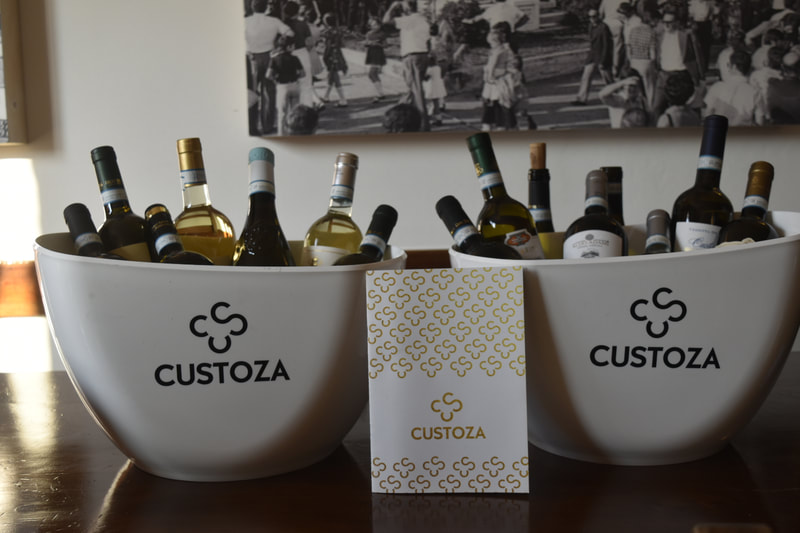
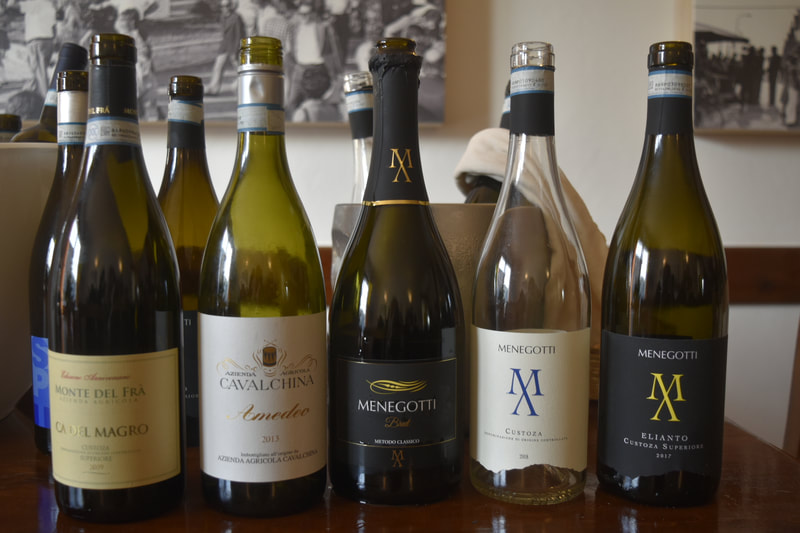
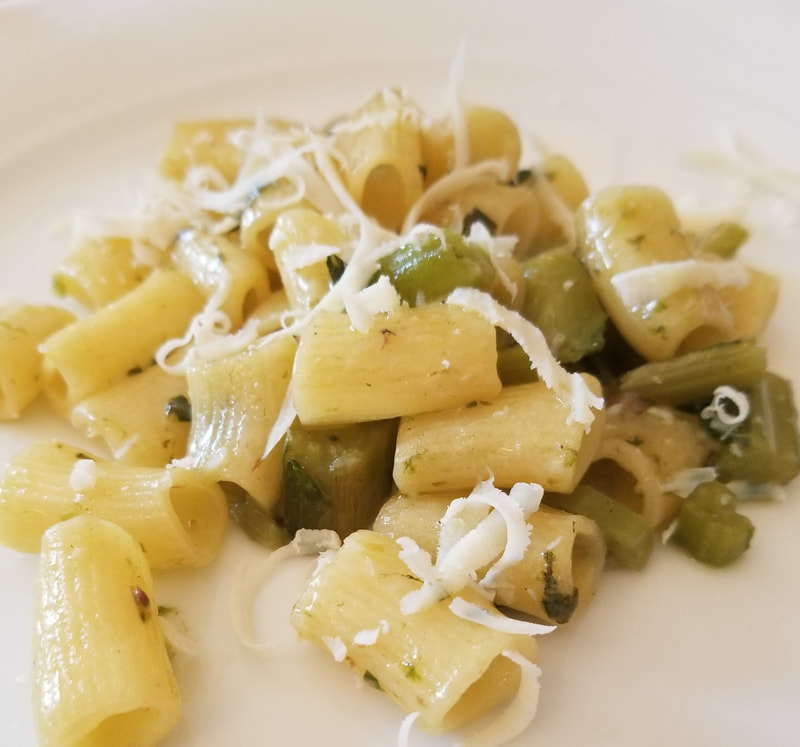
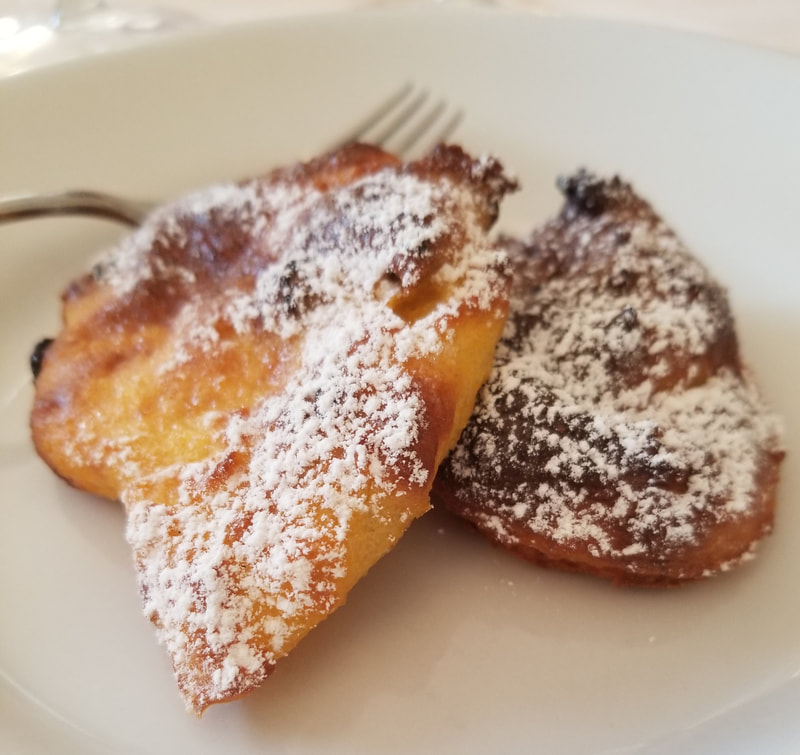
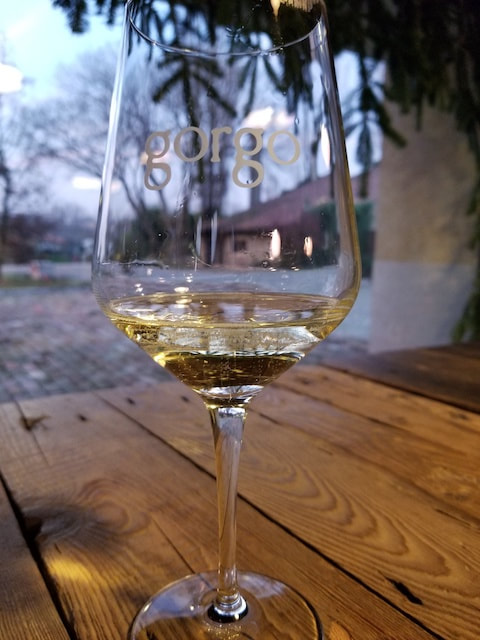
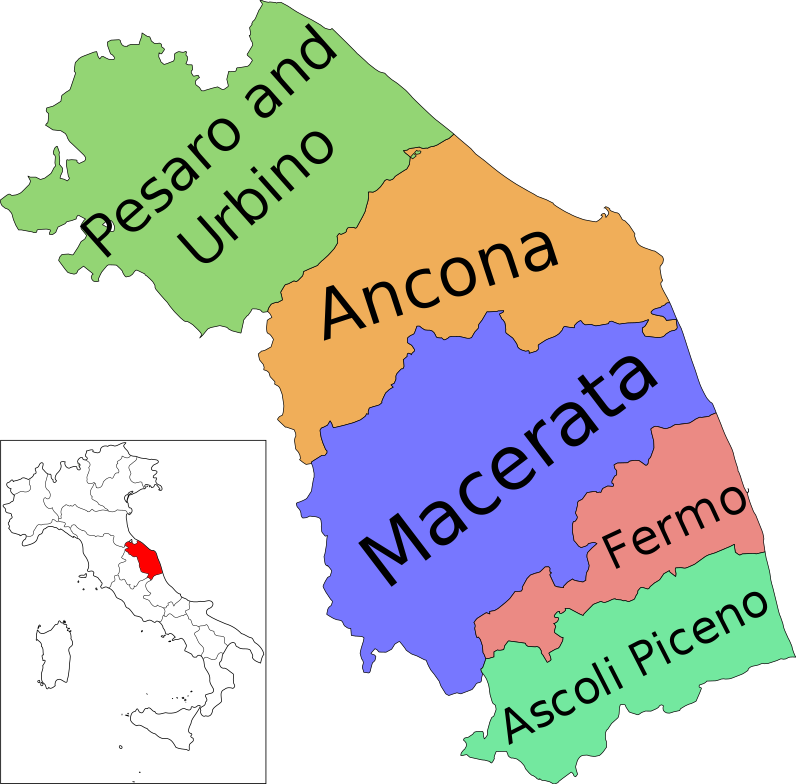
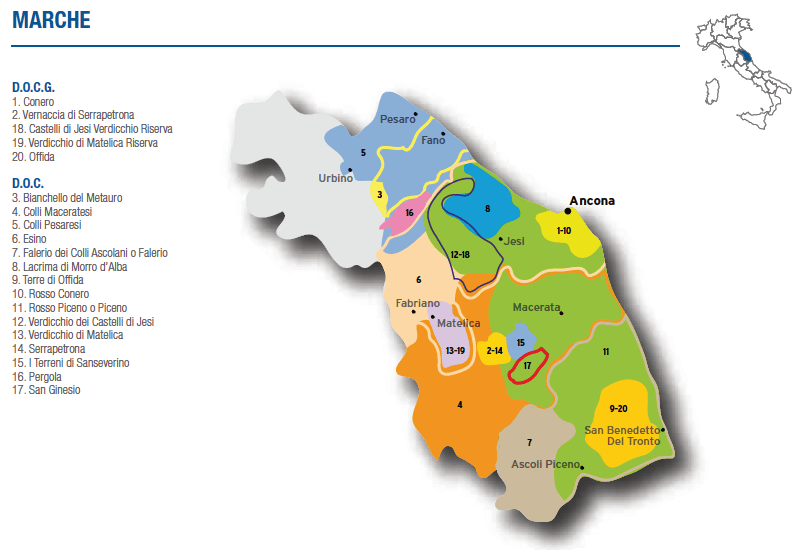
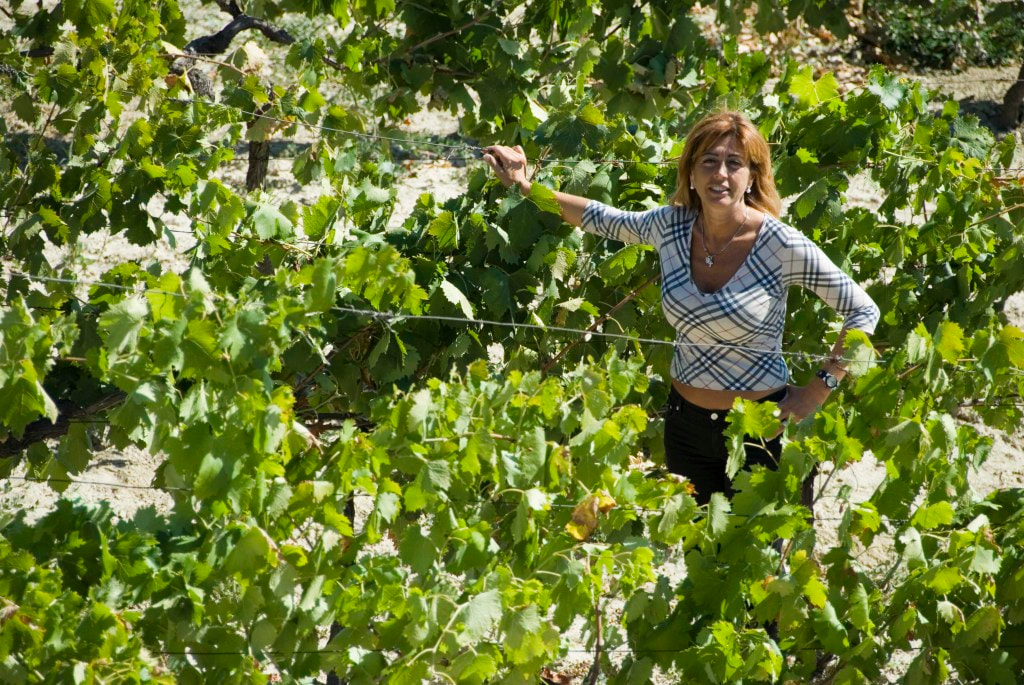
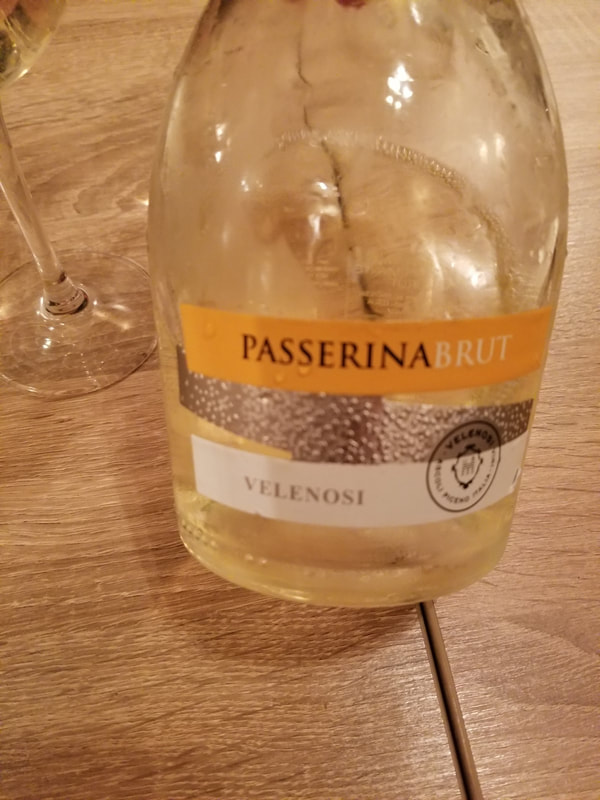
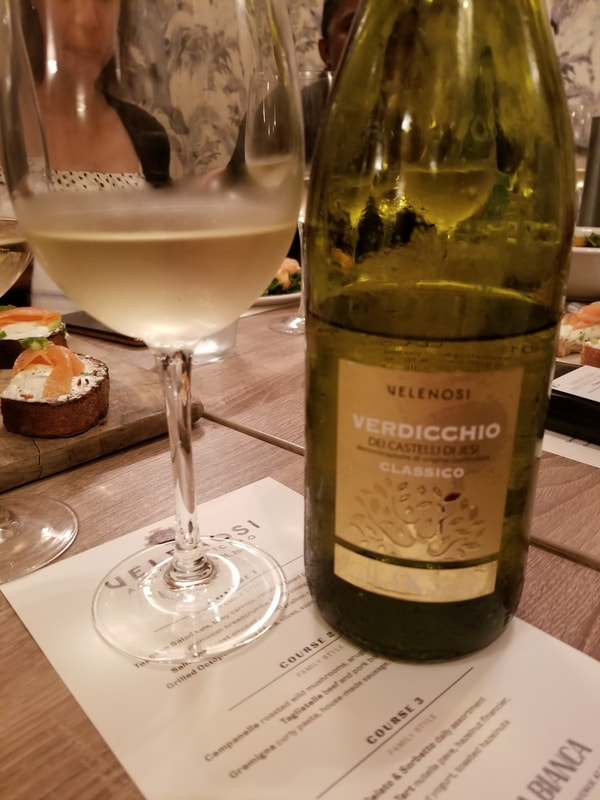
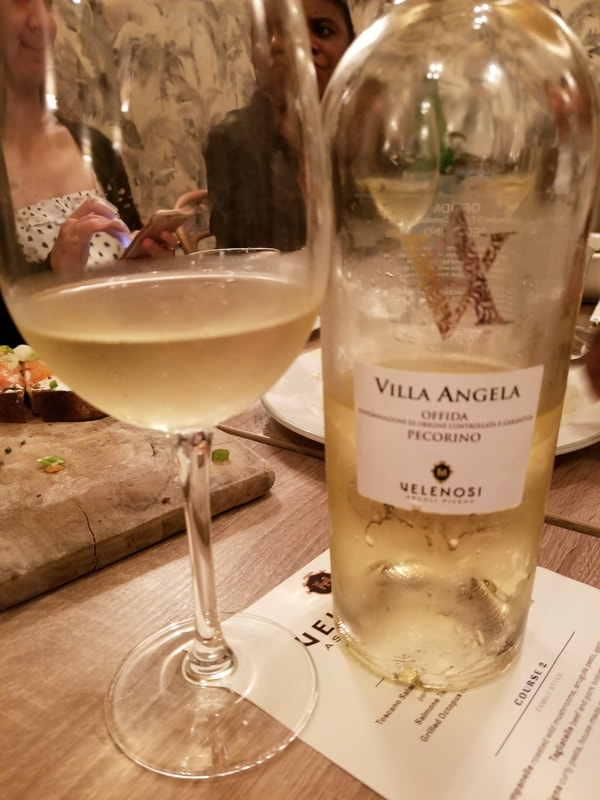
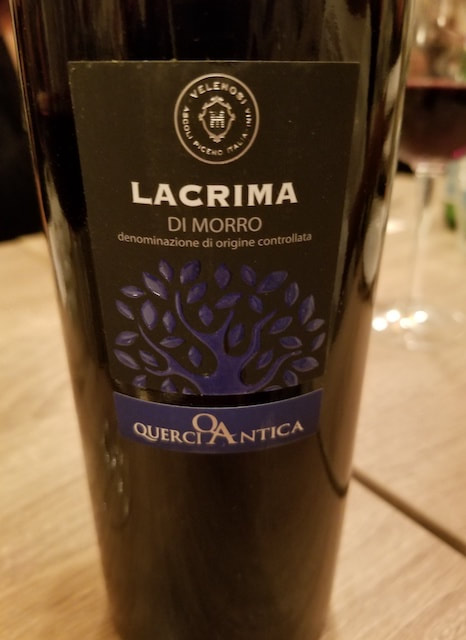
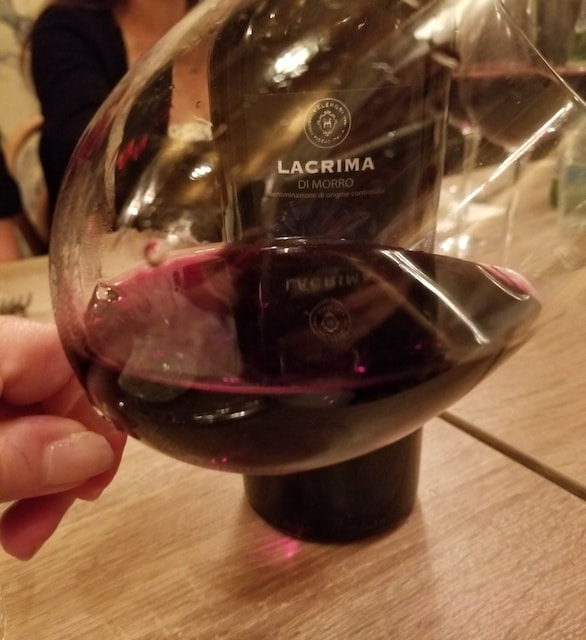
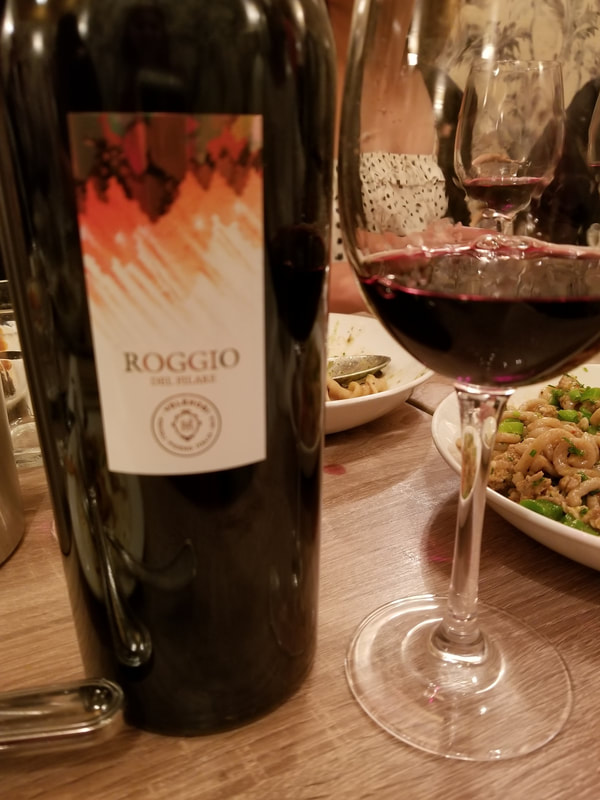
 RSS Feed
RSS Feed